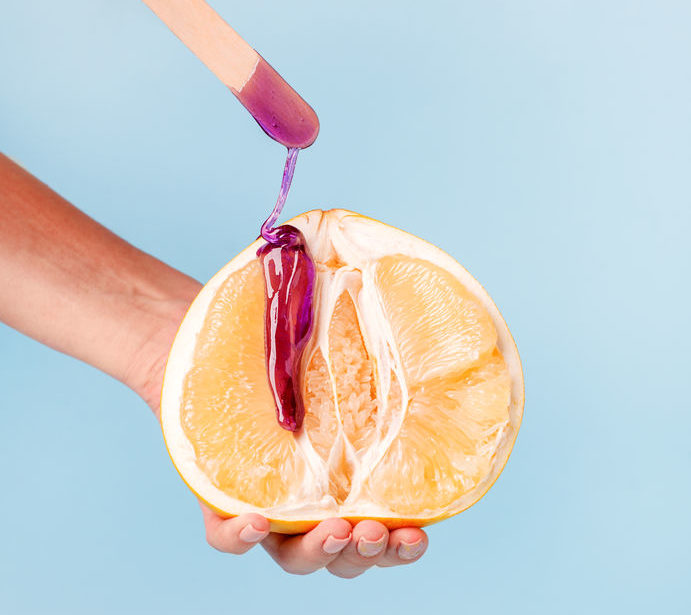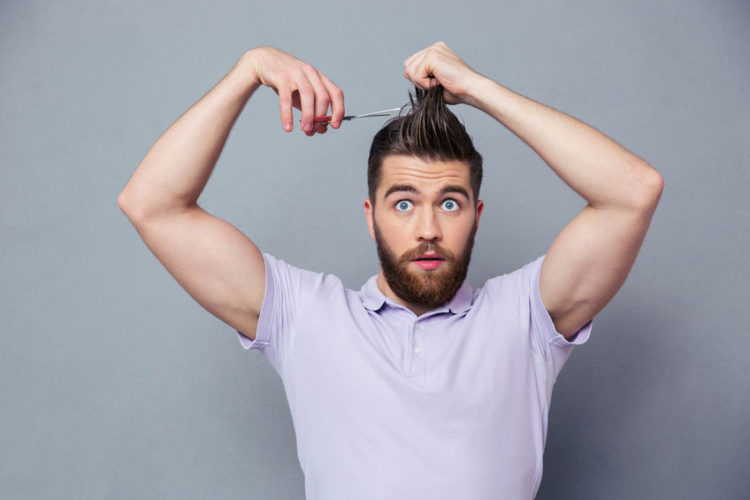By Saskia Salak –
It’s hard to imagine “wax on, wax off” being synonymous with anything other than the heartwarming family film The Karate Kid. But the world’s a hard place, even harder for those who indulge in the occasional or frequent waxing. Television reruns keep reminding us of that.
Who can forget Steve Carell’s breakout role in The 40-Year-Old Virgin screaming bloody murder as the hair is ripped from his chest? On the less pious side, there is the image of Carrie Bradshaw, Sex in the City’s finest, wincing as she undergoes her first Brazilian. Sure, these references might be a bit dated, but it turns out so is the hirsute “Au Naturel” look. Ultimately, if the last three decades are any indication, hairlessness is here to stay. Whether this hairless fixation and the accompanying waxing process is healthy and wise is another question entirely.
Salon waxings or now even DIY efforts done at home have become big business since the process was invented in the early 90’s by the J Sisters, seven Brazilian sisters living in New York. While most body parts with hair can be waxed, a societal fixation has always focused on our bodies’ nether regions and the waxing process affectionately known as the Brazilian or Brozilian for men. The service’s mainstream popularity is often credited to Bradshaw, who left her appointment feeling like Sex on a Stick.
It’s not surprising then to see the surge in demand for everything waxing, but especially for removing hair from private parts. Bliss Spa, in fact, reported providing 70,000 Brazilians in 2011, double the number from 2010. Since then, demand had grown industry-wide with the $15 billion Personal Waxing & Nail Salon market employing nearly 400,000 people in the U.S. alone while realizing annual revenue growth rates of 7.5 percent. The waxing segment of this industry alone is estimated to account for more than $2 billion in annual revenues, Statista.com reports.
This, of course, means lots of people are getting waxing treatments whether at home or in salons. Statista.com, in fact, reports that more than 21 million Americans received at least one salon waxing treatment during the first six months of 2019—and of them, almost 7 million people had at least four treatments. These numbers don’t account for DIY waxings that likely are growing thanks to an explosion of off-the-shelf kits now available.
The Journal of Sexual Medicine underscored this general fixation via a study on the habits of college students that found that 50% of women and 19% of men are now hair free.
Hairless ambitions aside, the real costs and drawbacks of waxing are likely to extend past than 40-minutes of pain and the price of a salon visit ($70 plus) or purchasing a DIY kit ($5 to $50). There is growing clinical and anecdotal evidence that waxing effects can be harmful, which begs the question… is waxing good or bad?
Surface level problems are common. Frequent waxers, for example, can find themselves prone to skin sensitivity, ingrown hairs, scars, bruising and even burns, according to Byrdie.com. Waxing, unfortunately, may turn up the heat on other health risks as well. A greater worry that haunts every brave soul before they hear the command to butterfly is: can waxing make it easier for someone to get an STI (sexually transmitted infection)?
The answer is still unclear. “There’s no data that says grooming is associated with STIs that’s large scale and solid… Nothing out there exists,” says Dr. Benjamin Breyer, chief of urology at Zuckerberg San Francisco General Hospital and Trauma Center. However, there have been links between waxing and a viral skin infection called molluscum contagiosum.
Ironically, these links highlight that pubic hair is there for a reason. These hairs act as an additional barrier to help block individuals from potential infections. Think of them as a highly personal hairy little army. Beyond removing this protective layer, waxing also can create microscopic wounds that increase the risk of bacteria or viruses entering the body.
If the side effects of waxing haven’t nurtured a deeper respect for the hairy 70’s, the potential for an unsanitary salon waxing experience might. Given the nature of the work and the potential risk of infection, the health standards are each particular salon are crucial to having a positive experience. At a minimum, all tools must be disinfected prior to use and practitioners must refrain from doubling dipping into the wax pot.
Still want to go hairless but avoid waxing? Other options include laser hair removal (yes that’s available for even the most sensitive bits), shaving and a relatively new method called sugaring.
Regardless of the motive, when it comes to waxing, cleanliness is godliness, which is something to keep in mind next time that tempting $20 Waxing Groupon appears on your feed.









